
Disclaimer
Switch Kiteboarding has not paid me to do this review. I was provided two kites and a bar to review, but paid for shipping and customs. My review is 100% my honest and unbiased opinion, as recommending bad products would only hurt Global Kite Spot’s reputation in the long run.
This review is based on my subjective perception of the kites’ performance and characteristics after a few sessions on each kite. I’ve ridden a big range of kites from Switch and other brands, but I’m not an expert in kite tuning so this is more of a first impressions summary.
Background
I’ve been riding Switch kites since 2012. I was part of their team rider program back in the days, and even after the program ended I kept riding them, trying almost every model in the range. For me they have always offered best value for money with their direct-to-consumer business model. Both build quality and flying characteristics have suited me just fine.
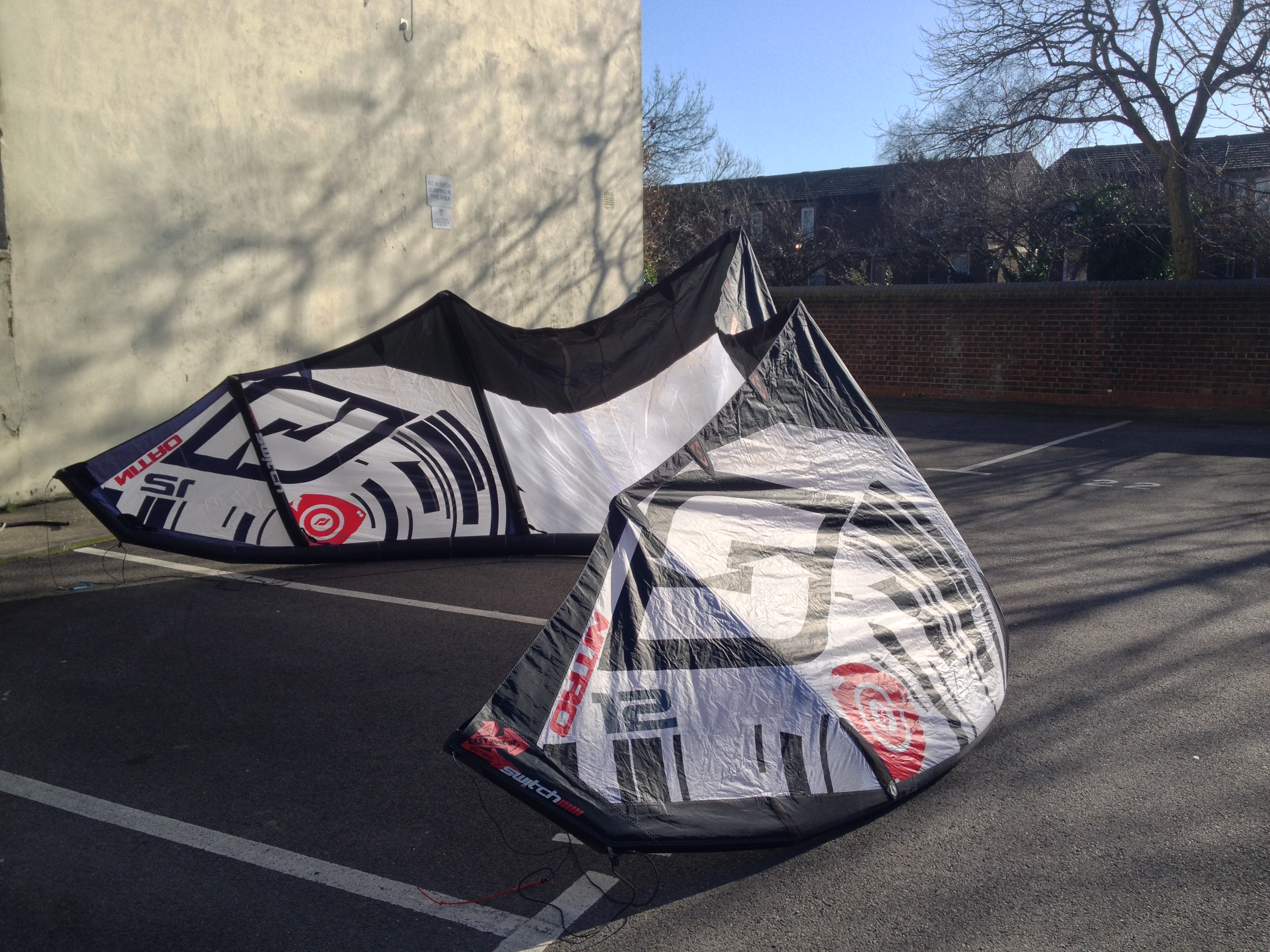
When Switch Kiteboarding reached out to discuss how we could promote the brand on the site we quickly concluded that reviewing gear is hard to beat as a way to reach the audience. I picked the latest models Nitro 7 and Krypto to review as I’ve ridden both Nitro and Legacy in the past and I was curious to try the latest iterations first hand (Krypto is taking over from the Legacy in the line-up).
The new designs
If you’re familiar with Switch as a brand you might’ve noticed some big changes in their kite line-up. While Nitro, Element and Helium are still there, they have all been overhauled design-wise and do not any more carry the Bill Hansen signature. On the forum people speculate and investigate to find the original designs behind these new kites.
Personally I’m happy if a Nitro still takes me to the moon and drops me down gently, and I can hand my beginner girlfriend an Element without fearing it will create frustration instead of stoke. Basically, if the characteristics are still there I don’t really mind if old models have new designs.
Build quality of Switch kites
Both Nitro 7 and Krypto are built solid and to last. They’re using same materials and details that we’ve seen in the last few generations. My most recent Switch kites were Legacy 1 and Nitro 5 from 2015/16 and purely from visual examination not much seems to have changed since then. For the price you pay it’s good, solid quality.
Double rip stop, large uni-pump inflate/deflate point and reinforced sensitive areas is the standard here. Yes, I’ve fixed my Nitro 5 bladder, canopy and leading edge numerous times but I’ve also taken it around the world and used and abused it for three years and it’s still a kick-ass kite.
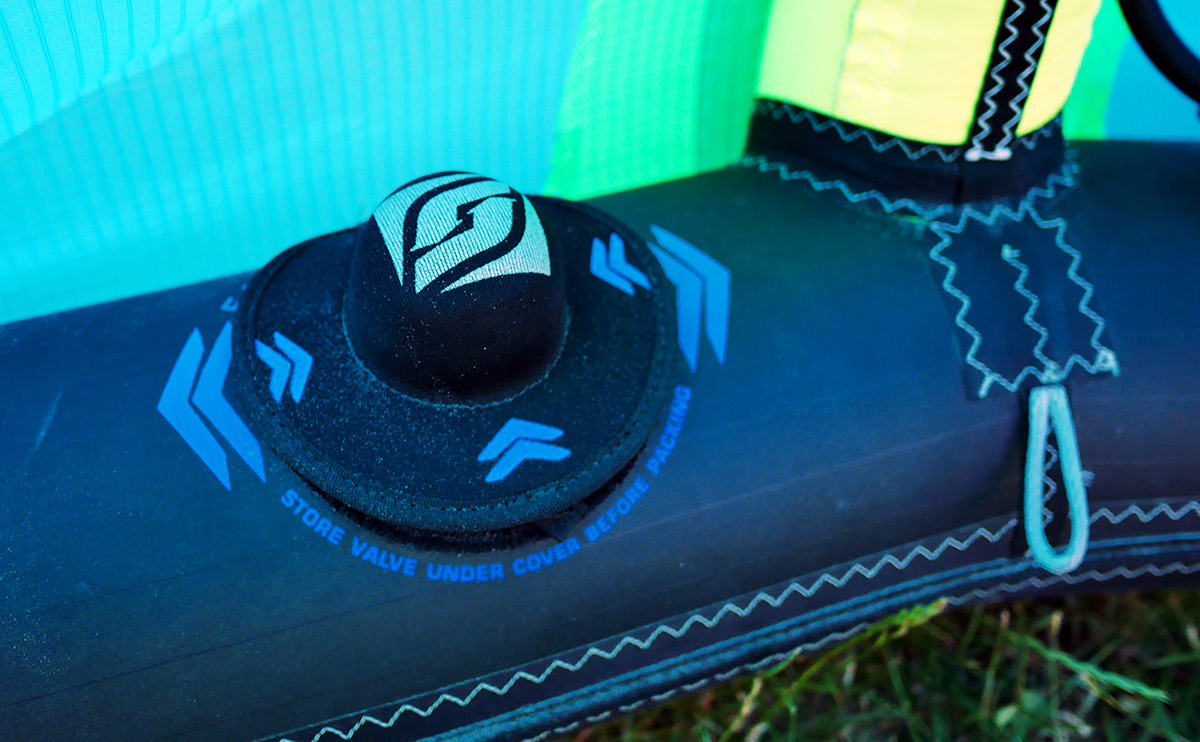
12m Switch Krypto review
Switch C4X control bar review
Switch Nitro 7, 9m
The 9m Nitro 7 is a five strut, open C, high aspect bridled kite that weights in at 4.2 kg. It’s marketed as a performance big air kite for riders who want to fly high. It’s also supposed to be a decent freestyle kite.
On the water / In the air
Impressions collected over four sessions, 18 – 32 knots. Mainly flat water and small surf. I’m 78kg and rode a finless Tona Pop with boots and used the 55cm C4X bar with 20m lines.
I’m coming from a 10m Nitro 5. A lovely kite once dialled in, although not very forgiving. The first thing I noticed about Nitro 7 is that it’s a fair bit faster turning. This is a 9m instead of a 10m but I’m pretty sure you’d notice the difference even if you compared equal sizes.
This messed up the timings on all my spinning jumps on my first session so what I did was to put the backline connection points to the slower turning speed setting and used the ‘More depower’ pigtail, which is further out than the ’Normal’ one. Now it was a lot more predictable while doing my backs and fronts and a familiar feeling coming from the Nitro 5.
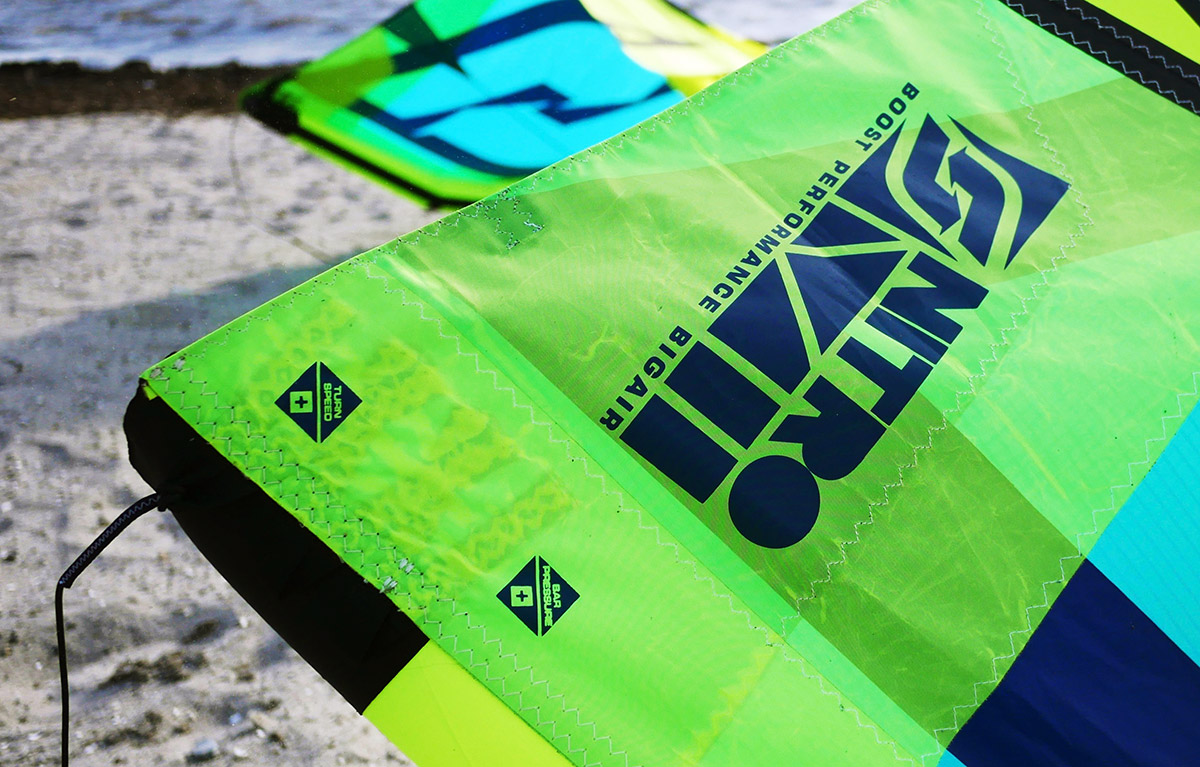
Performance
Apart from the faster, smaller radius turning the kite feels a lot like the old Nitro. It’s still a high aspect kite but with more swept wingtips. It reminds me a bit of Duotone Dice in shape and handling but jumping is more like the old Nitro than anything else. This means fairly light bar pressure, good boost and lift while landings are smooth and gentle. Not as gentle as the Element 6 but still great.
Now I get into very subjective domains, talking about how the kite feels, so take this with a grain of salt. Nitro 5 has more pop and line slack. You need to fly it actively and if you speed downwind you risk stalling the kite, i.e. drift is not good. Nitro 7 is better at this. I found it being more stable in the air with better drifting abilities, but I was often overpowered when popping unhooked. I probably need more time in the right conditions to see if this is actually true or just what I felt during the test sessions. Bear in mind that I’m at a basic level with unhooked tricks to begin with.
Relaunch has improved from previous models. It’s not like the Element or other low aspect kites, but I had no issues getting it back up after a bit of pulling a steering line.
The loops are powerful, at least on the slower turning speed setting. I only do kite loops in light wind so I can’t comment on mega loop performance, but from what I can tell it behaves similarly to Nitro 5. It’s not a kite to learn looping on – it’s simply too hardcore. Downloops are perfectly fine though.
Summary
All in all I like Nitro 7 a lot. Coming from previous Nitro models I appreciate the similarities and the improved stability and drift. I can ride it in strong and light winds alike but definitely this is a kite to enjoy in high winds for boosting. If you want something more all-round and forgiving take the Element. If you want something more freestyle take the Krypto.

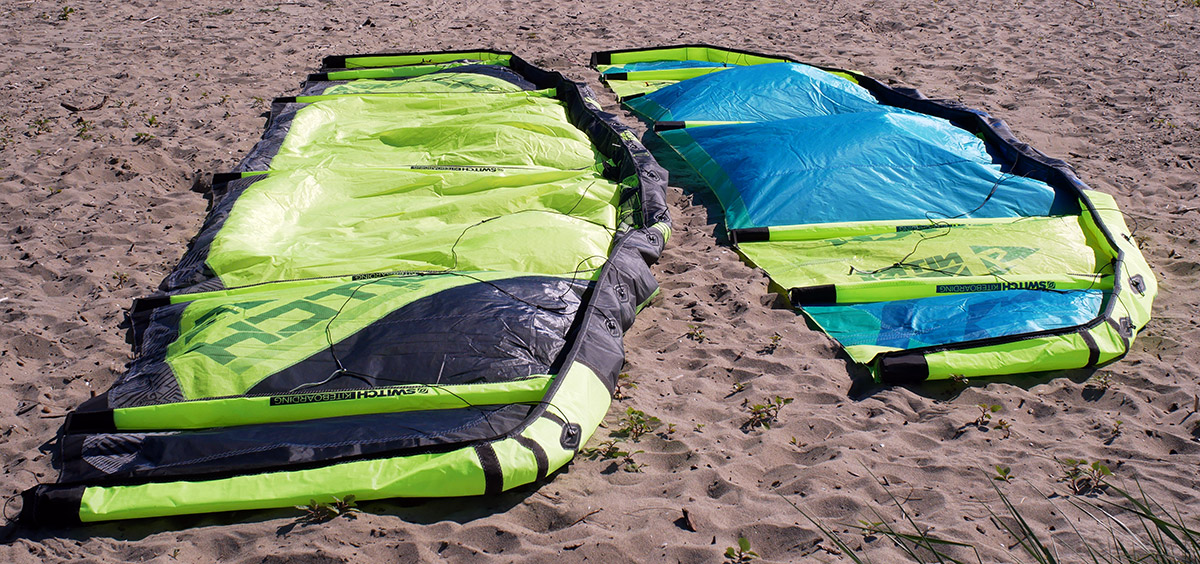
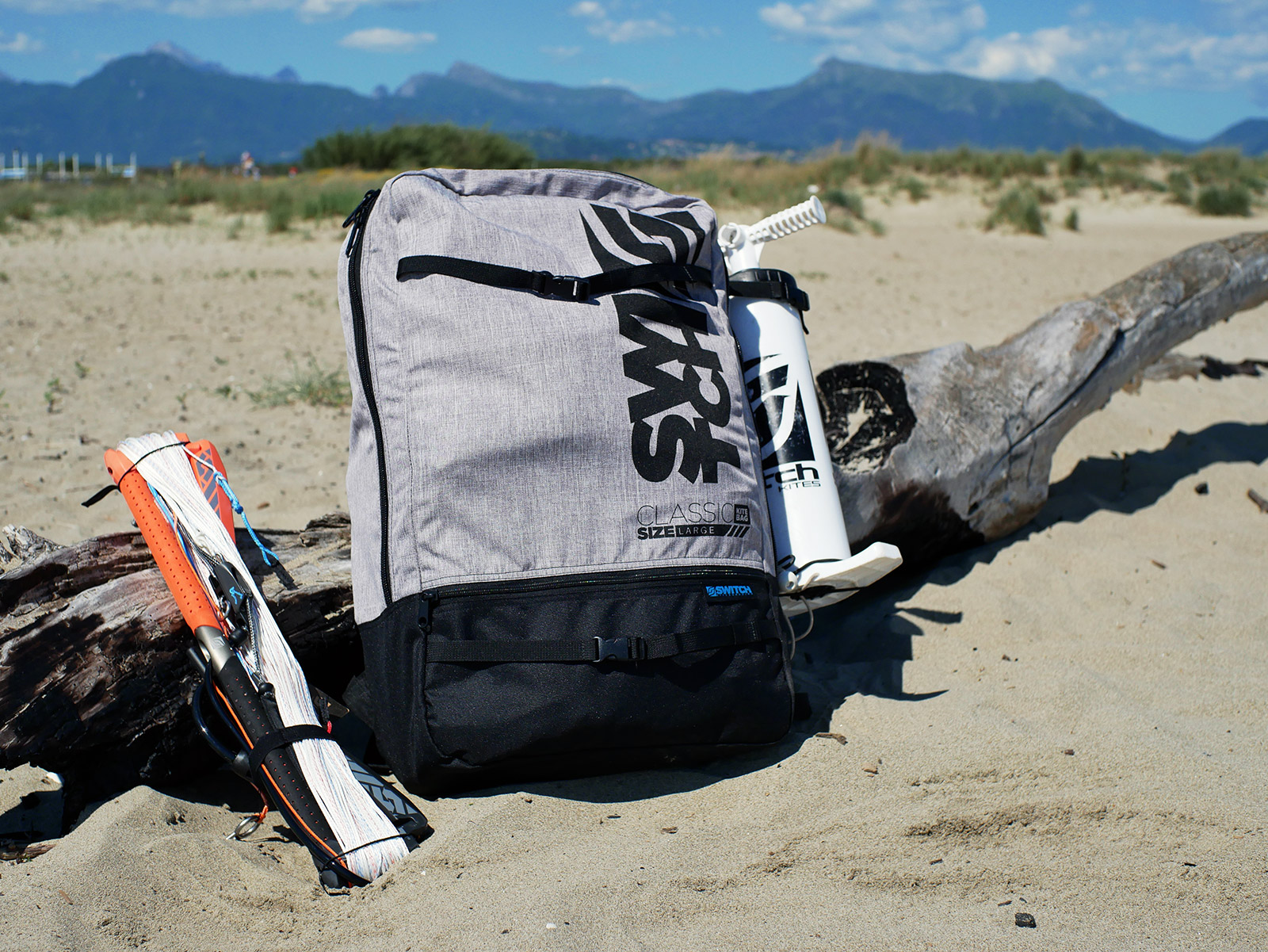
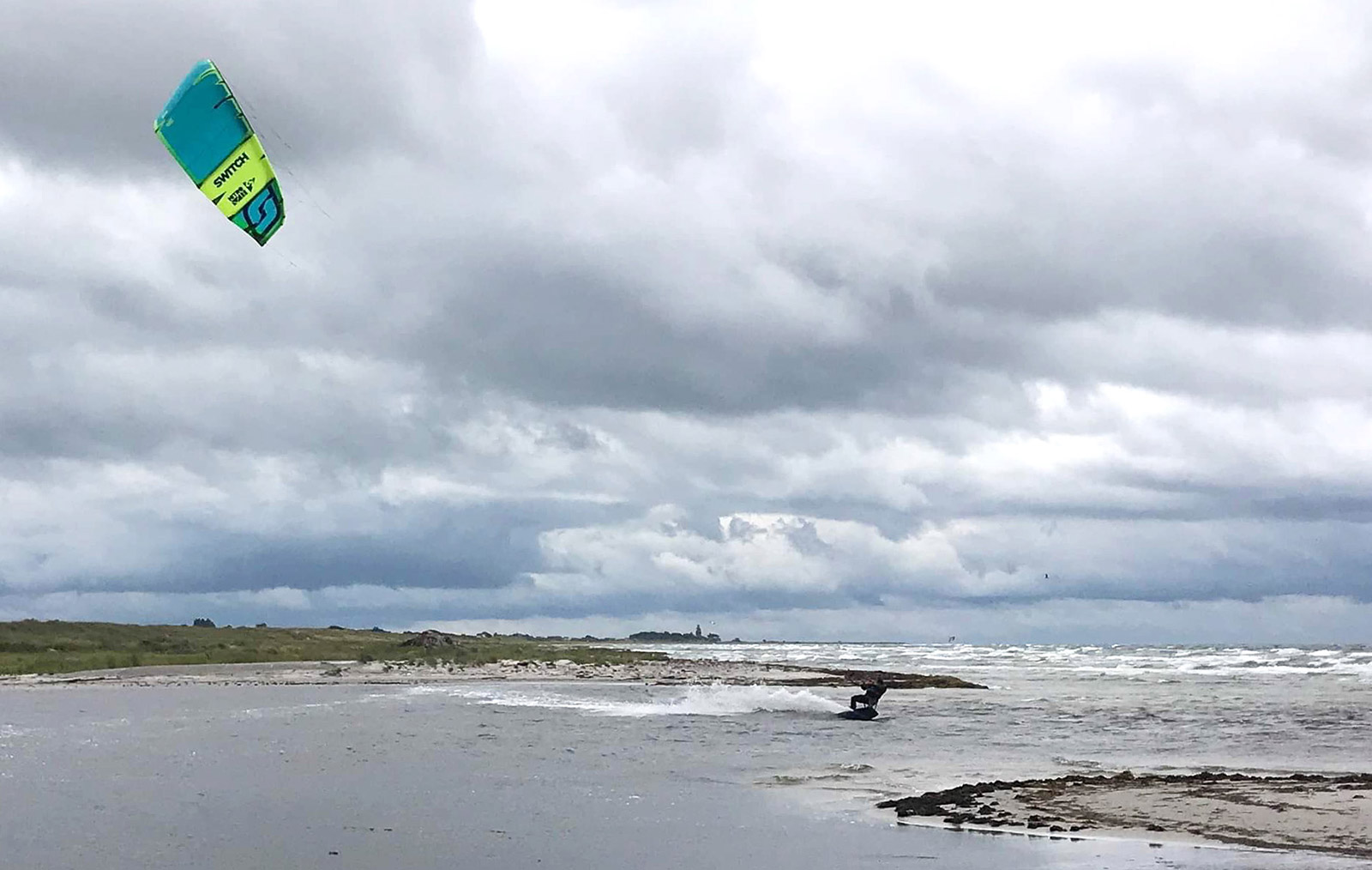
Hur mycket betalar man för frakt eller tull när man köper en switch kite?
Hej Paulo. En kompis till mig betalade runt 2000kr for tull och moms for sin Element förra sommaren.
I just bought a Nitro 7, in 12 meter. I’m using it with a Liquid Force Mission Control Bar v3. I’ve found out that bar pressure is simply too high for me, takes a lot of effort to downloop and to steer the kite in general. I’ve talked with switch support and they emplace me to verify if bar line lengths are equal, haven’t checked yet, but bar is only 7 months old, so chances are it’s not it, any advise about that?
Hi Benjamin. Since I don’t know your background and history with other kites you might already be aware of this, but in my experience Nitro definitely is high bar pressure out of the box compared with a lot of kites. It’s also a large radius turning kite. Friends trying my Nitro 5 have said it’s sluggish. Nitro 7 is less so but a similar DNA is still there. It might just be the way Nitro is designed rather than a control bar setting/issue. You can try the most outer steering line setting on the kite if you have’t already. That should give you less bar pressure and quicker turning.
Hi Martin,
Thanks a lot for your comment.
For 12-13 meter, I’ve been using RRD ( Passion 2015) , latelly Liquid Force (P1 2019 also quite high bar pressure), and now tried the Nitro 7 (even more bar pressure). The only setting I have tried currently, is preciselly the outter (lighter bar presure), therefore, I’m really afraid to try the inner (even more bar pressure!!).
Regarding the back lines (direction) I’ve noticed they only have 2 knots for power setting¿?, and also they are very close to each other. Is that a factory issue or is it like that really?
I’m starting to feel that I should have bought the Nano… is it any lighter on the bar?
All new Switch kites I’ve seen have the same steering line options (Standard and Depower) and they are all just an inch between. I can’t comment on Nano as I haven’t tried it, but at least the Element is both more pivotal turning and lighter bar pressure than Nitro. And Nano is supposed to be even further that way on the spectrum. Tbh, I think Switch made a blunder introducing the Nano alongside the Element since it’s not clear enough how they are different. The Element is a good wave kite but also jumps really well.
I’d recommend calibrating your lines on land just to eliminate the possibility of the issue being due to the control bar. Video link >>
https://www.youtube.com/watch?v=bZtVjf4W1YA
Hi 🙂 Switch gibt es leider seit diesem Jahr nicht mehr. Gibt es irgendwei eine Chance noch einen Nitro in 12m² zu bekommen? (außer bei Kleinanzeigen)
Hi Linda.
I know, it’s sad but most small brands seem to struggle in this industry. You can try this group on Facebook for finding a used Nitro: https://www.facebook.com/groups/298337020245697